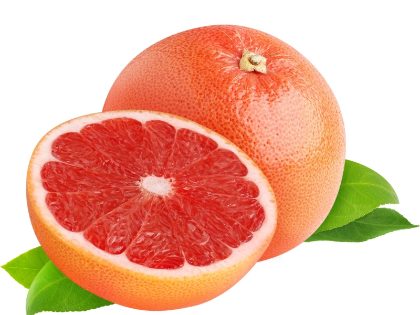Yoga Terminology: Recognising Common and Sanskrit Terms
Learning the fundamentals of Sanskrit is beneficial for many yoga practitioners as it can improve their practice. An overview of some of the more popular terminology you could hear in class is provided here: Jiva: Individual spirit; embodied soul (jivatma, mas). Also see Jivanmukti. Mahaprana, also known as the Divine Life of Brahman, is the intelligent cosmic life-force that permeates everything.
Yoga

Bhakti
 Bhakti is an intellectual and emotional form of devotion. It is a form of attachment and affection that can exist between friends or lovers, between a teacher and a pupil, or even between parents and kids.
According to yoga, achieving moksha, or spiritual enlightenment, is possible through unifying the mind, body, and spirit. The attainment of moksha, which is freedom from the illusion of existence, requires the practice of niyama (personal observances), pratyahara (sensory restraint), and dhyana (meditation).
The core ideas of yoga philosophy are acceptance of both the good and the bad as well as self-discovery. After that, you may confront your anxieties and start living your life. That's why treating everyone in your yoga class with respect is crucial. If you use language that only half of your pupils will comprehend, they will feel excluded and may not return to your class. particularly if the pupil is a novice! Thus, make good use of your Sanskrit understanding.
Bhakti is an intellectual and emotional form of devotion. It is a form of attachment and affection that can exist between friends or lovers, between a teacher and a pupil, or even between parents and kids.
According to yoga, achieving moksha, or spiritual enlightenment, is possible through unifying the mind, body, and spirit. The attainment of moksha, which is freedom from the illusion of existence, requires the practice of niyama (personal observances), pratyahara (sensory restraint), and dhyana (meditation).
The core ideas of yoga philosophy are acceptance of both the good and the bad as well as self-discovery. After that, you may confront your anxieties and start living your life. That's why treating everyone in your yoga class with respect is crucial. If you use language that only half of your pupils will comprehend, they will feel excluded and may not return to your class. particularly if the pupil is a novice! Thus, make good use of your Sanskrit understanding.
Maha Nadi
 Nadis are the unseen passageways that allow energy to move. They transport prana, our life force energy, in a manner akin to veins and arteries. They can get obstructed, which can lead to both physical and emotional disharmony.
In essence, there are three nadis: sushumna, pingala, and ida. They all crisscross one another in different ways as they go upward from the base of the spine. The sushumna is the central channel, and the ida and pingala are connected to the sun and moon, respectively.
The term "brahma nadi" describes the knot that forms at the base of the spine between the Svadhisthana and Muladhara chakras. This knot is caused by normal earthly concerns such as anxiety about food or shelter, dread of death, worry about one's health, and a general lack of foundation. Strong resolve and a well-defined goal are essential for untangling this knot. Resilience is also beneficial because it might be challenging to handle the mental strain. This is what Vajra Shakti is all about.
Nadis are the unseen passageways that allow energy to move. They transport prana, our life force energy, in a manner akin to veins and arteries. They can get obstructed, which can lead to both physical and emotional disharmony.
In essence, there are three nadis: sushumna, pingala, and ida. They all crisscross one another in different ways as they go upward from the base of the spine. The sushumna is the central channel, and the ida and pingala are connected to the sun and moon, respectively.
The term "brahma nadi" describes the knot that forms at the base of the spine between the Svadhisthana and Muladhara chakras. This knot is caused by normal earthly concerns such as anxiety about food or shelter, dread of death, worry about one's health, and a general lack of foundation. Strong resolve and a well-defined goal are essential for untangling this knot. Resilience is also beneficial because it might be challenging to handle the mental strain. This is what Vajra Shakti is all about.
Flow
 Learning some yoga lingo will help you follow along in class even when the teacher is speaking in a language you don't understand. Knowing what is going on in the body and how each pose connects to the breath is also beneficial.
Vinyasa: (vin-yah-sah): fluid pose transitions that connect breath to movement; frequently performed to music. It is also referred to as flow yoga and is a more energetic kind of yoga than hatha yoga.
Prana, pronounced "prah-nah," is the essential life force energy that penetrates everything, including inanimate objects. In Polynesia, it is also known as mana, and in China, chi, and Japan, ki.
A few sounds or words repeated during meditation to help centre and excite the mind is called a mantra (man-trah). Om is a quiet, constant sound that is commonly used as a mantra.
Learning some yoga lingo will help you follow along in class even when the teacher is speaking in a language you don't understand. Knowing what is going on in the body and how each pose connects to the breath is also beneficial.
Vinyasa: (vin-yah-sah): fluid pose transitions that connect breath to movement; frequently performed to music. It is also referred to as flow yoga and is a more energetic kind of yoga than hatha yoga.
Prana, pronounced "prah-nah," is the essential life force energy that penetrates everything, including inanimate objects. In Polynesia, it is also known as mana, and in China, chi, and Japan, ki.
A few sounds or words repeated during meditation to help centre and excite the mind is called a mantra (man-trah). Om is a quiet, constant sound that is commonly used as a mantra.









